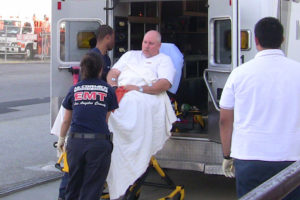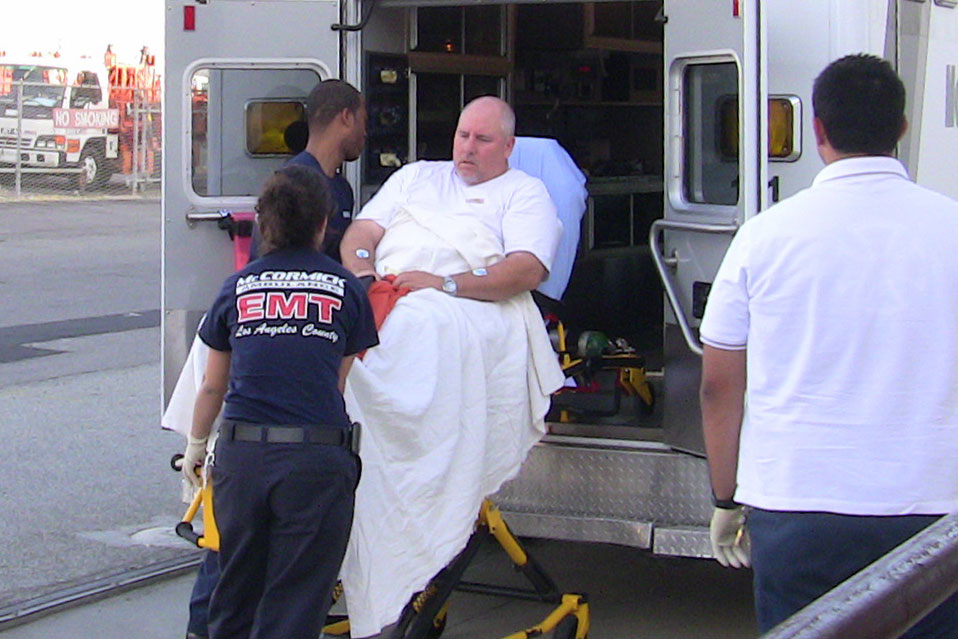Disclaimer: The information on our website is provided for general information purposes only. We make no representations or warranties of any kind, express or implied, about the completeness, accuracy, reliability, suitability or availability with respect to the website or the information contained on our website for any purpose. Any reliance on such information is therefore strictly at your own risk and we are not liable for any damages or losses arising out of or resulting from your reliance on any information contained on our website.
An Emergency Medical Technician (EMT) plays a pivotal role in urgent healthcare, possessing specialized training to deliver essential emergency medical services. Often the first responders at accident scenes or medical emergencies, EMTs are equipped with fundamental skills and tools necessary to perform initial assessments, administer life-preserving care, and stabilize patients. They are adept at navigating high-pressure scenarios with composure and precision, ensuring safe and swift transportation of patients to healthcare facilities for advanced medical intervention. Their expertise is crucial in bridging the gap between emergency situations and hospital care, often making the difference in critical moments.
Watch a video to learn what an emergency management technician does.
How to Become an EMT (Emergency Medical Technician)
An EMT is considered to be an entry-level emergency responder position. In fact, the training you’ll receive to become an EMT is so useful that it’s required for other first responders such as firefighters. Some police officers even attend EMT training as they are often the first on scene.
Step 1: Meet EMT Basic Requirements
Most states require you to be 18 years old before you start your training as an EMT. Expect to take a background check as well. Some training programs will require you to take a CPR course before starting. When you research state-approved programs in your area, be sure to ask for information about the minimum requirements needed to start their program as some programs may require you to have some college too.
Step 2: Get Trained as an EMT
An Emergency Medical Technician training program takes about 120-150 hours to complete and can take students 1-2 years to complete their education. The training will be in the classroom and have a hands-on component. This training is also the stepping stone needed to become a paramedic should you decide to continue your education.
Step 3: Get Certified as an EMT
The National Registry of Emergency Medical Technicians issues certifications to EMTs who have passed their training and an exam. They offer more information about the EMT certification process and exam (link opens in a new tab) on their website.
Benefits of being an EMT
Embarking on a career as an Emergency Medical Technician (EMT) offers a range of fulfilling benefits. It provides an opportunity to make a significant impact in people’s lives, often in their most vulnerable moments. EMTs gain a profound sense of purpose and accomplishment by being frontline responders in emergencies, saving lives and providing critical care.
The role of an EMT also offers dynamic and challenging experiences, ensuring no two days are the same, and constantly hones problem-solving and decision-making skills. Additionally, working as an EMT paves the way for continuous learning and professional growth in the medical field. It provides a solid foundation for those aspiring to advance into more specialized medical roles, such as paramedics or nurses. Furthermore, EMTs develop strong teamwork and communication skills, working closely with other healthcare professionals. This career not only fosters personal development but also provides a sense of community and camaraderie among fellow first responders.
Job Description of a EMT

According to the National Highway Traffic Safety Administration, “emergency medical services personnel treat nearly 20 million patients a year in the United States.” The emergencies they respond to vary significantly so they never know what action they may have to take when arriving on scene. When arriving at an emergency, they may also have little support and supervision. This is why EMTs must be calm under stress, have good critical thinking skills, people skills, and can make sound judgment calls. EMTs arrive on the scene by ambulance, firetruck, or even helicopter.
Not only do EMTs address symptoms, illness, or trauma efficiently, they may also be surrounded by non-emergency personnel who are reacting to the emergency. They must be excellent communicators as they may need to ask questions of those on the scene to collect additional information and may need to inform them where they are transporting the victim. EMTs also communicate with other emergency personnel such as emergency dispatchers, police, firefighters, or paramedics.
EMTs also transport the individual to a hospital for further treatment as fast and safe as possible. Because of this, they need to communicate the health status of the patient to the incoming hospital so emergency medical personnel can be prepared to treat the condition as soon as possible. EMTs must also be aware of their surroundings and assess whether a victim or other emergency responders are still in a dangerous environment to provide care. Most work ‘on-scene’ in an out-of-hospital setting or care facility. However, some do work in emergency rooms, urgent care, or even with fire medical units. Others may be hired to staff a large, public event where the likelihood of an emergency situation is high. This could include organized events such as marathon races, concerts, or professional sporting events.
Paramedic Career Video Transcript
Ambulance sirens are a daily sound backdrop to city life. TV dramas and real-life news programs alike feature high-speed trips to rescue victims and speed them to life-saving medical care. Inside the ambulance, the on-site care providers are emergency medical technicians, known as EMTs and paramedics. These professionals respond to 911 emergency calls, evaluate a patient’s needs, and perform needed medical services, such as administering CPR, stabilizing a trauma victim, or dressing a wound. Some paramedics serve on rescue crews based on helicopters or airplanes. Most paramedics and EMTs work for ambulance services, local government, and hospitals. Their work requires frequent kneeling, bending, and lifting to care for and move patients.
EMTs and paramedics may be exposed to contagious diseases and dangerous situations, and may need to treat combative individuals who don’t want treatment. Their work schedules vary: volunteers are scheduled as needed, while most paid staff work full-time in 12- or 24-hour shifts, including overnights and weekends. A formal educational program and licensure are required for this field, though states vary in what tasks they allow EMTs and paramedics to perform. Some states may require paramedics to have an associate’s degree, for example, to qualify to administer medications and use complex equipment, such as EKG monitors. In case of emergency it’s reassuring to know that EMTs and paramedics are ready to respond at a moment’s notice.
Article Citations
Bureau of Labor Statistics, U.S. Department of Labor, Occupational Outlook Handbook, EMTs and Paramedics.
National Center for O*NET Development. 29-2041.00. O*NET OnLine.
The career video is in the public domain from the U. S. Department of Labor, Employment and Training Administration.
National Highway Traffic Safety Administration. National EMS Scope of Practice Model.

